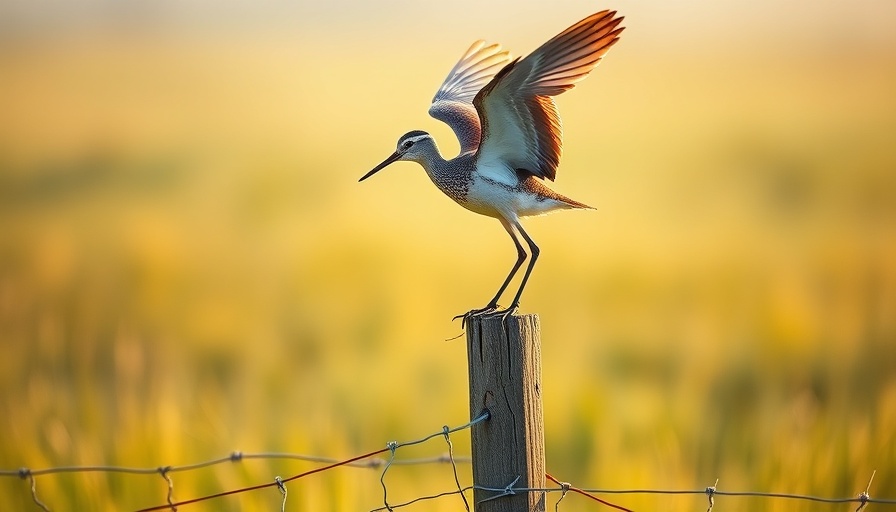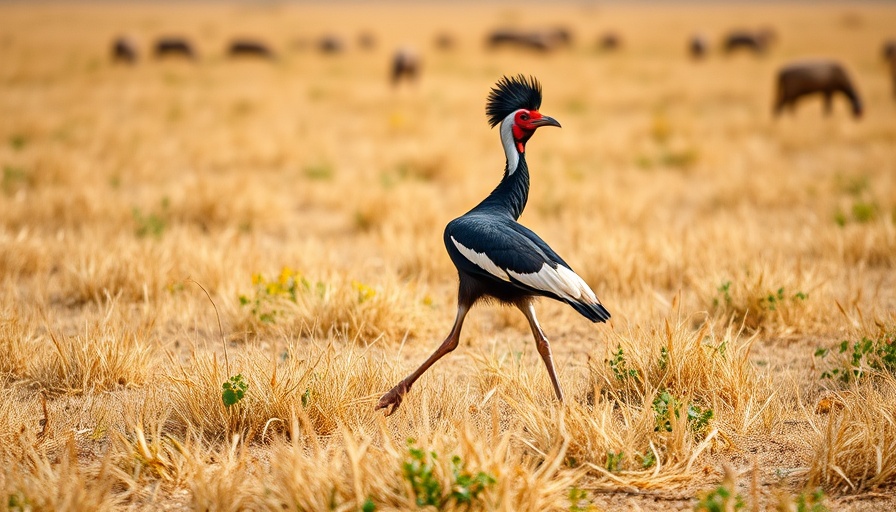
Celebrating the Upland Sandpiper's Unique Song
The Upland Sandpiper, a slender shorebird often found far from the ocean, is celebrated for its distinctive whistle—a sound that evokes the open prairies of North America. This remarkable bird can often be spotted perched on fences, surveying its expansive grassland habitat, which it relies on for breeding. Despite being labeled as a shorebird, the Upland Sandpiper prefers lush grassy landscapes over coastlines, showcasing its unique adaptation to terrestrial life.
The Threats to Grassland Habitats
Regrettably, the Upland Sandpiper faces challenges in its survival due to habitat loss. Major portions of its breeding grounds have been converted to row-crop agriculture, leading to a decline in these birds' populations. In the heart of the northeastern U.S., where grasslands are dwindling, Upland Sandpipers increasingly resort to nesting in unconventional places such as rural airports. This adaptation underlines the dire need to safeguard grassland ecosystems across their range, which stretches from Canada down to Argentina.
Global Range and Seasonal Migration
One of the fascinating traits of the Upland Sandpiper is its migratory pattern. During winter, these birds travel to the grasslands of South America, particularly in Argentina, Uruguay, and Brazil. This seasonal movement highlights their dependency on sprawling grasslands, both in North and South America, for survival. If we prioritize the conservation of these habitats, we can ensure that the sweet sound of Upland Sandpipers continues to resonate across our landscapes.
Why Grassland Conservation Matters
Grasslands are crucial ecosystems that support diverse wildlife, including various bird species. The Upland Sandpiper serves as an indicator of prairie health; its presence suggests a thriving ecosystem. Protecting these habitats not only secures the future of the Upland Sandpiper but also maintains the intricate web of life that relies on grasslands. Community efforts in conservation, such as protecting native grasslands from agricultural expansion, are essential to foster biodiversity and preserve natural beauty for generations to come.
Our Role in Protecting Avian Life
Birdwatchers and nature enthusiasts can channel their passion into action by advocating for the preservation of grassland habitats. Community-led initiatives can make a significant difference—participating in local conservation efforts, educating others about the importance of these ecosystems, and supporting legislation aimed at protecting our natural landscapes can all contribute to the Upland Sandpiper's future.
 Add Row
Add Row  Add
Add 




Write A Comment